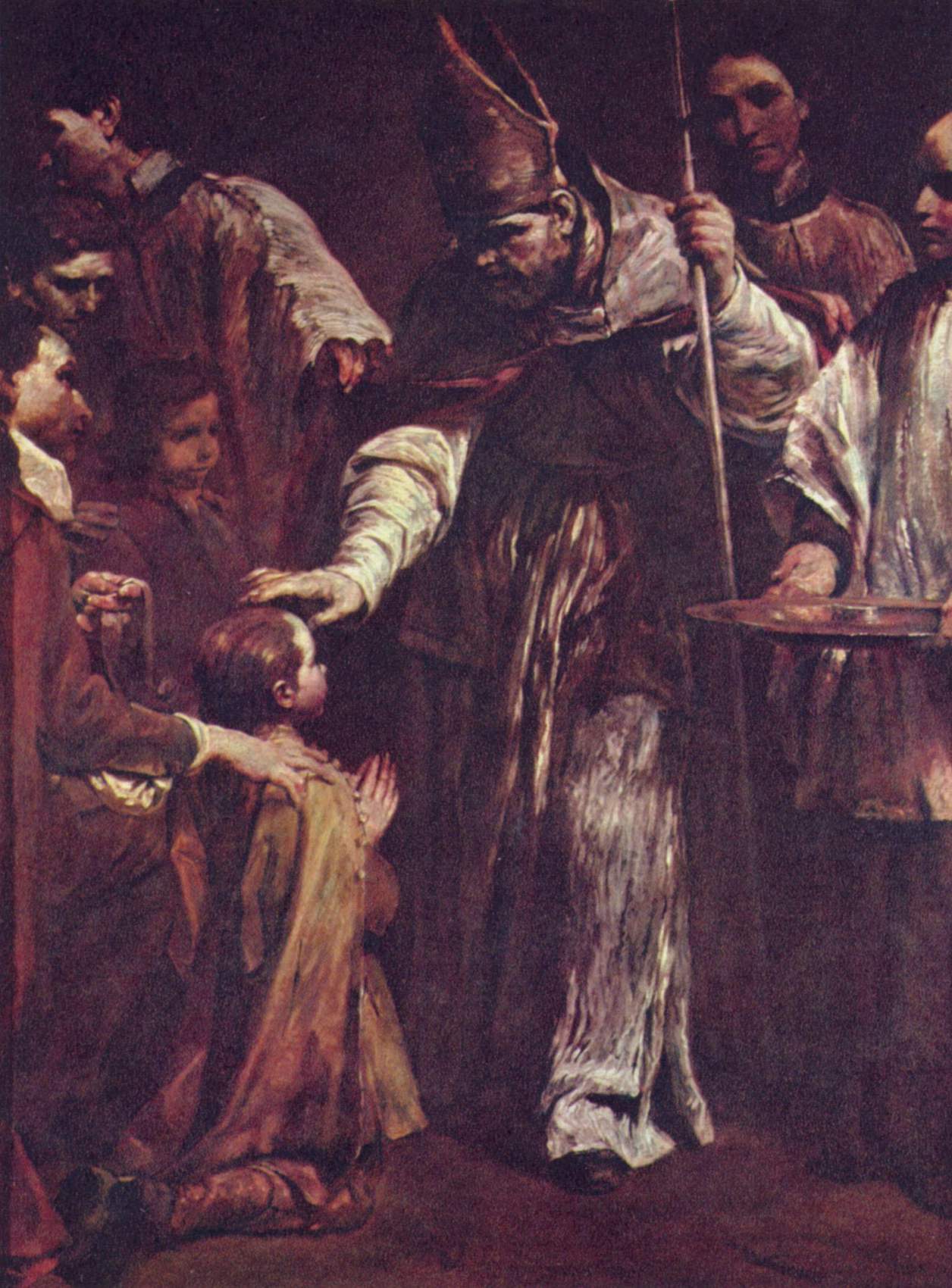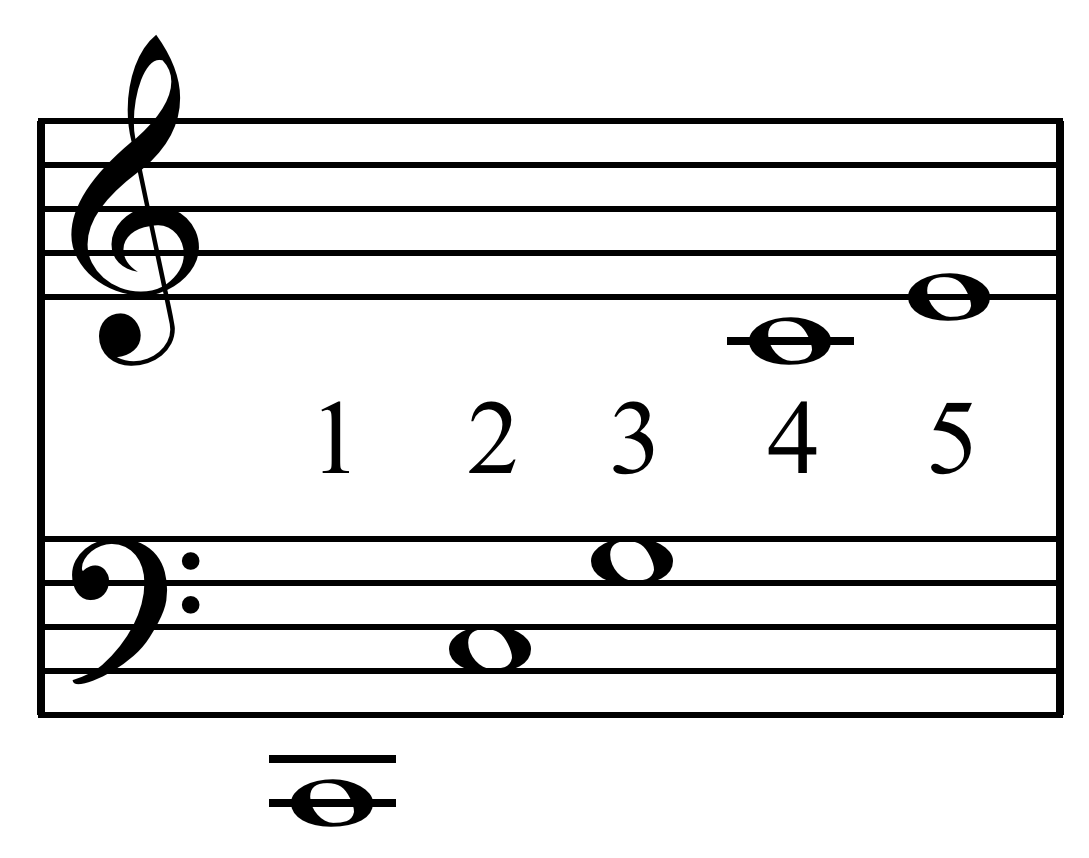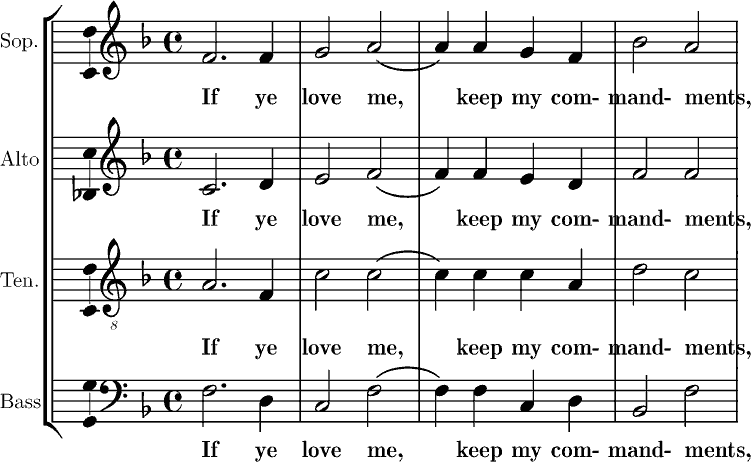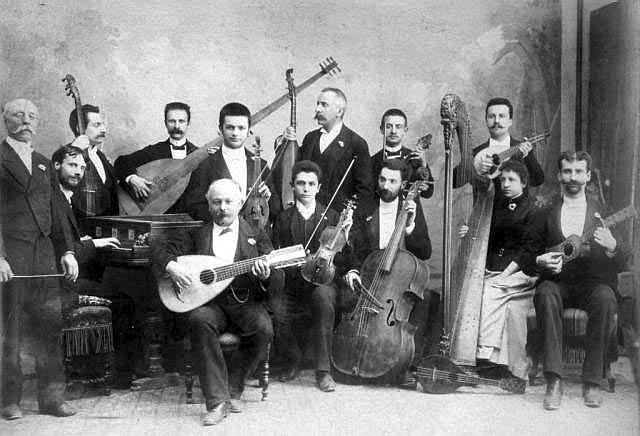|
Giuseppe Ottavio Pitoni
Giuseppe Ottavio Pitoni (Rieti, 18 March 1657 – Rome, 1 February 1743) was an Italian organist and composer. He became one of the leading musicians in Rome during the late Baroque era, the first half of the 18th century. Life Taken to Rome as an infant, he began vocal study with Pompeo Natali at the age of five and sang in the choir of San Giovanni dei Fiorentini from age eight. At Santi Apostoli, Rome, Santi Apostoli he sang and studied counterpoint with Francesco Foggia, where his early compositions were performed. By age sixteen he was ''maestro di cappella'' at Santa Maria Maggiore, Monterotondo, a historic church near Rome. In 1673 as ''maestro'' for the cathedral at Assisi he began intensive study of the works of Giovanni Pierluigi da Palestrina, Palestrina, and in 1676 moved to the cathedral at Rieti. In 1677 he returned to Rome for a lifelong appointment as ''maestro di cappella'' at the Basilica of San Marco, Rome, San Marco. In addition he held a series of prestigiou ... [...More Info...] [...Related Items...] OR: [Wikipedia] [Google] [Baidu] [Amazon] |
Pietro Ottoboni (cardinal)
Pietro Ottoboni (2 July 1667 – 28 February 1740) was an Italian cardinal and grandnephew of Pope Alexander VIII, who was also born Pietro Ottoboni. He is remembered especially as a great patron of music and art. Ottoboni was the last person to hold the curial office of cardinal-nephew, which was abolished by Alexander's successor, Pope Innocent XII, in 1692. Ottoboni '"loved pomp, prodigality, and sensual pleasure, but was in the same time kind, ready to serve, and charitable." Overview Pietro was born in Venice, son of Antonio Ottoboni and Maria Moretti. His family was noble Ottoboni family, whose most prominent member had been his granduncle Pope Alexander VIII (1689–1691). The family was invited into the nobility of Venice as a result of the battle of Zonchio (1499) and later met the financial qualifications for nobility in the 17th century after amassing a fortune in the diplomatic service. Pietro was admitted to the clerical tonsure and minor orders on 20 October ... [...More Info...] [...Related Items...] OR: [Wikipedia] [Google] [Baidu] [Amazon] |
Just Intonation
In music, just intonation or pure intonation is a musical tuning, tuning system in which the space between notes' frequency, frequencies (called interval (music), intervals) is a natural number, whole number ratio, ratio. Intervals spaced in this way are said to be pure, and are called just intervals. Just intervals (and chords created by combining them) consist of tones from a single harmonic series (music), harmonic series of an implied fundamental frequency, fundamental. For example, in the diagram, if the notes G3 and C4 (labelled 3 and 4) are tuned as members of the harmonic series of the lowest C, their frequencies will be 3 and 4 times the fundamental frequency. The interval ratio between C4 and G3 is therefore 4:3, a just fourth (music), fourth. In Western musical practice, bowed instruments such as violins, violas, cellos, and double basses are tuned using pure fifths or fourths. In contrast, keyboard instruments are rarely tuned using only pure intervals—the desire fo ... [...More Info...] [...Related Items...] OR: [Wikipedia] [Google] [Baidu] [Amazon] |
Antiphon
An antiphon ( Greek ἀντίφωνον, ἀντί "opposite" and φωνή "voice") is a short chant in Christian ritual, sung as a refrain. The texts of antiphons are usually taken from the Psalms or Scripture, but may also be freely composed. Their form was favored by St Ambrose and they feature prominently in Ambrosian chant, but they are used widely in Gregorian chant as well. They may be used during Mass, for the Introit, the Offertory or the Communion. They may also be used in the Liturgy of the Hours, typically for Lauds or Vespers. They should not be confused with Marian antiphons or processional antiphons. When a chant consists of alternating verses (usually sung by a cantor) and responses (usually sung by the congregation), a refrain is needed. The looser term antiphony is generally used for any call and response style of singing, such as the kirtan or the sea shanty and other work songs, and songs and worship in African and African-American cultu ... [...More Info...] [...Related Items...] OR: [Wikipedia] [Google] [Baidu] [Amazon] |
Division (music)
In music, division (also called Diminution#Diminution as embellishmen, diminution or coloration) refers to a type of Ornament (music), ornamentation or Variation (music)#History of variations, variation common in 16th- and 17th-century music in which each Musical note, note of a melody, melodic line is "divided" into several shorter, faster-moving notes, often by a rhythmic repetition (music), repetition of a simple musical device such as the trill (music), trill, turn (music), turn or cambiata on each note in turn, or by the introduction of nonchord tones or arpeggio figures. The English term 'division' broadly corresponds to the contemporary usage of in Italian, or in Spanish, and in French. The word was used in this sense to describe improvised coloratura ornamentation as used by opera singers of the day, but it made a ready way of devising variations upon a theme (music), theme, and was particularly cultivated in the form of the "division on a ground (music), ground" – ... [...More Info...] [...Related Items...] OR: [Wikipedia] [Google] [Baidu] [Amazon] |
Concertato
Concertato is a term in early Baroque music referring to either a ''genre'' or a ''style'' of music in which groups of instruments or voices share a melody, usually in alternation, and almost always over a basso continuo. The term derives from Italian ''concerto'' which means "playing together"—hence ''concertato'' means "in the style of a concerto." In contemporary usage, the term is almost always used as an adjective, for example "three pieces from the set are in ''concertato'' style." A somewhat oversimplified, but useful distinction between ''concertato'' and ''concerto'' can be made: the ''concertato'' style involves contrast between opposing groups of voices and groups of instruments: the ''concerto'' style, especially as it developed into the ''concerto grosso'' later in the Baroque, involves contrast between large and small groups of similar composition (later called "ripieno" and "concertino"). The style developed in Venice in the late 16th century, mainly through t ... [...More Info...] [...Related Items...] OR: [Wikipedia] [Google] [Baidu] [Amazon] |
Venetian Polychoral Style
The Venetian polychoral style was a type of music of the late Renaissance and early Baroque eras which involved spatially separate choirs singing in alternation. It represented a major stylistic shift from the prevailing polyphonic writing of the middle Renaissance, and was one of the major stylistic developments which led directly to the formation of what is now known as the Baroque style. A commonly encountered term for the separated choirs is ''cori spezzati''—literally, "broken choruses" as they were called, added the element of spatial contrast to Venetian music. These included the echo device, so important in the entire baroque tradition; the alternation of two contrasting bodies of sound, such as chorus against chorus, single line versus a full choir, solo voice opposing full choir, instruments pitted against voices and contrasting instrumental groups; the alternation of high and low voices; soft level of sound alternated with a loud one; the fragmentary versus the co ... [...More Info...] [...Related Items...] OR: [Wikipedia] [Google] [Baidu] [Amazon] |
Homophony
In music, homophony (;, Greek: ὁμόφωνος, ''homóphōnos'', from ὁμός, ''homós'', "same" and φωνή, ''phōnē'', "sound, tone") is a texture in which a primary part is supported by one or more additional strands that provide the harmony. One melody predominates while the other parts play either single notes or an elaborate accompaniment. This differentiation of roles contrasts with equal-voice polyphony (in which similar lines move with rhythmic and melodic independence to form an even texture) and monophony (in which all parts move in unison or octaves). Historically, homophony and its differentiated roles for parts emerged in tandem with tonality, which gave distinct harmonic functions to the soprano, bass and inner voices. A homophonic texture may be homorhythmic, which means that all parts have the same rhythm. Chorale texture is another variant of homophony. The most common type of homophony is melody-dominated homophony, in which one voice, often the h ... [...More Info...] [...Related Items...] OR: [Wikipedia] [Google] [Baidu] [Amazon] |
Counterpoint
In music theory, counterpoint is the relationship of two or more simultaneous musical lines (also called voices) that are harmonically dependent on each other, yet independent in rhythm and melodic contour. The term originates from the Latin ''punctus contra punctum'' meaning "point against point", i.e. "note against note". John Rahn describes counterpoint as follows: Counterpoint has been most commonly identified in the European classical tradition, strongly developing during the Renaissance and in much of the common practice period, especially in the Baroque period. In Western pedagogy, counterpoint is taught through a system of species (see below). There are several different forms of counterpoint, including imitative counterpoint and free counterpoint. Imitative counterpoint involves the repetition of a main melodic idea across different vocal parts, with or without variation. Compositions written in free counterpoint often incorporate non-traditional harmonies and c ... [...More Info...] [...Related Items...] OR: [Wikipedia] [Google] [Baidu] [Amazon] |
Accademia Nazionale Di Santa Cecilia
The Accademia Nazionale di Santa Cecilia () is one of the oldest musical institutions in the world, founded by the papal bull ''Ratione congruit'', issued by Sixtus V in 1585, which invoked two saints prominent in Western musical history: Gregory the Great, for whom the Gregorian chant is named, and Saint Cecilia, the patron saint of music. Since 2005 it has been headquartered at the Renzo Piano designed Parco della Musica in Rome. It was founded as a "congregation", or "confraternity", and over the centuries has grown from a forum for local musicians and composers to an internationally acclaimed academy active in music scholarship (with 100 prominent music scholars forming the body of the Accademia), music education (in its role as a conservatory) and performance (with an active choir and a symphony orchestra, the Orchestra dell'Accademia Nazionale di Santa Cecilia). The category of alumni of the associated conservatory (which in 1919 succeeded a ''liceo'') includes many ... [...More Info...] [...Related Items...] OR: [Wikipedia] [Google] [Baidu] [Amazon] |
Filippo Amadei
Filippo Amadei, also known as Pippo del Violoncello (fl. 1690–1730) was an Italian composer from Reggio Emilia, who was active in Rome and London. He appears to have worked as composer of cantatas, oratorios, and as a cellist for Cardinal Ottoboni from 1690 to 1711, the year of his oratorio ''Teodosio il giovane'' (1711), then again from 1723 to 1729. From 1719 to 1722 he was in London, where he wrote the first act of the opera '' Muzio Scevola'' (1721), with the second act by Giovanni Bononcini and the third by George Frideric Handel. Works Oratorio: * ''Teodosio il giovane'' Rome, 1711 on the story of Byzantine emperor Theodosius II Theodosius II ( ; 10 April 401 – 28 July 450), called "the Calligraphy, Calligrapher", was Roman emperor from 402 to 450. He was proclaimed ''Augustus (title), Augustus'' as an infant and ruled as the Eastern Empire's sole emperor after the ... (401–450) Operas * ''Arsace'' London, Royal Academy of Music, 1st Feb. 1721. * ''Muzio ... [...More Info...] [...Related Items...] OR: [Wikipedia] [Google] [Baidu] [Amazon] |
Bernardo Pasquini
Bernardo Pasquini (7 December 1637 – 21 November 1710) was an Italian composer of operas, oratorios, cantatas and keyboard music. A renowned virtuoso keyboard player, he was one of the most important Italian composers for harpsichord between Girolamo Frescobaldi and Domenico Scarlatti, having also made substantial contributions to opera and oratorio. Biography Pasquini was born in Massa in Valdinievole (today Massa e Cozzile, in the province of Pistoia, Tuscany). He was a pupil of Mariotto Bocciantini in Uzzano (Pistoia). When he was 13, he moved to Ferrara with his uncle Giovanni Pasquini, where, at the age of 16, he would become the organist of Accademia della Morte and serve from 1653 to 1655, a prestigious post that would later serve as a launching pad for his successors. He was quickly drawn to Rome, and, in 1657, he was appointed as the organist of Santa Maria in Vallicella (Chiesa nuova). In February 1664 he was appointed organist of the basilicas of Santa Maria Maggior ... [...More Info...] [...Related Items...] OR: [Wikipedia] [Google] [Baidu] [Amazon] |







